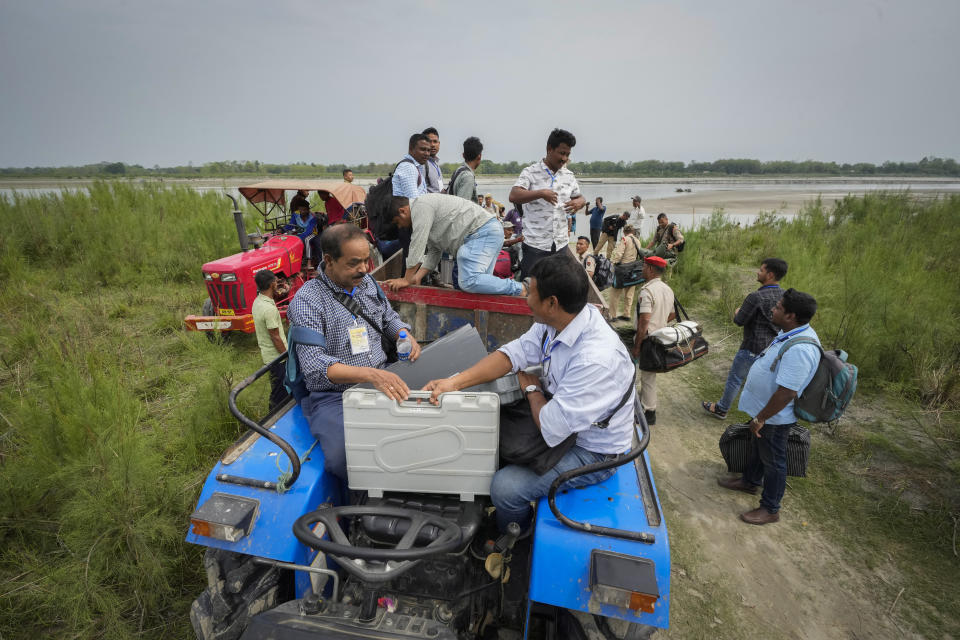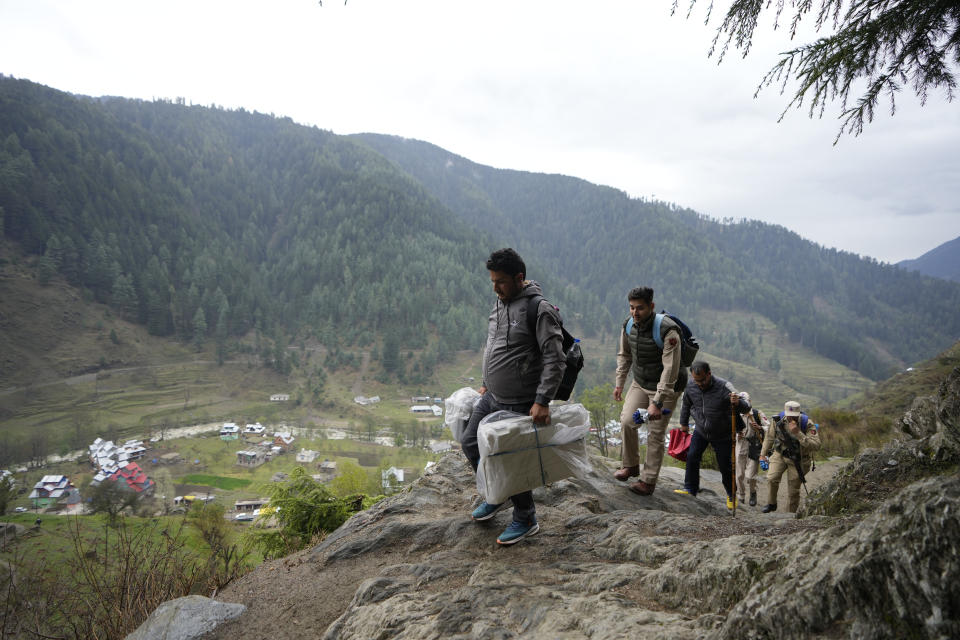Ferrying voting machines to mountains and tropical areas in Indian elections is a Herculean task
NEW DELHI (AP) — From the Himalayan mountains to the tropical Andaman Islands, Indian officials are using helicopters, buses, trucks, boats, donkeys, and mules to carry electronic voting machines for India’s gigantic national elections.
Election officials are traveling through jungles and snow-covered mountain tracks, even wading through rivers to set up polling stations in tents, shipping containers, and school buildings in remote areas.
The massive seven-phase election in the world’s most populous country of over 1.4 billion people started last week and will conclude on June 1. Nearly 970 million voters — more than 10% of the world’s population — will elect 543 members to the lower house of Parliament for five years during the staggered elections.
The votes will be counted on June 4.
Four donkeys lugged the voting machines to Kottur hills in the Dharmapuri parliamentary constituency in Tamil Nadu state in southern India where the first phase of voting was held Friday.
In West Bengal state, however, the officials could not use mules to reach Srikhola, a remote village at 6,400 feet (1,950 meters) above sea level. In February, the forest department banned mules in Singalila National Park to prevent the spreading of viral diseases in the wildlife sanctuary. They took the help of porters to carry machines to the polling center.
India moved from traditional ballot papers to electronic voting machines over two decades ago. A person needs to press the button against the name of the candidate or the party symbol flashing on the machine's screen to cast a vote.
The party symbols range from a lotus to a hand, bow, arrow, pressure cooker, hammer, sickle, kettle, balloon, and torch.
An electronic voting machine has a ballot unit, a control unit for an official to ensure a voter can vote only once, and a voter verifiable paper audit trail unit, known as VVPAT, which produces a paper slip to verify the vote if challenged.
Opposition parties, including the Congress and the Communist Party of India, have demanded a return to paper ballots for casting votes. Their leaders have blamed their series of defeats at the hand of the Bharatiya Janata Party on the manipulation of the voting machines.
They have petitioned India’s Supreme Court but remained unsuccessful so far.
The Election Commission of India says its voting machines are not computer controlled; they are standalone machines and not connected to the internet or any other network at any point in time. Therefore, the commission says, there is no chance of hacking by remote devices.




















